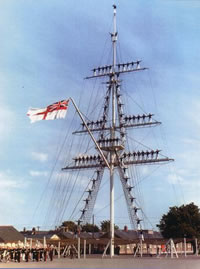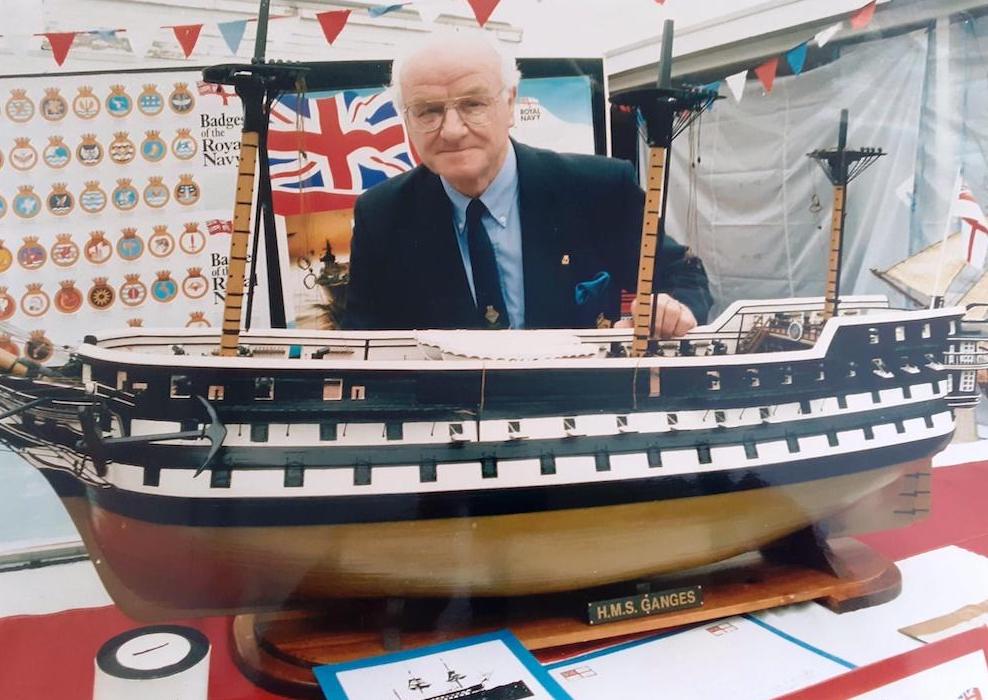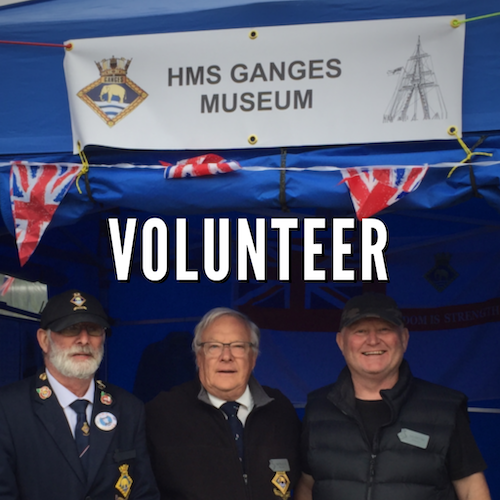

HISTORY
A Brief History of HMS Ganges
The following is extracted from the book 'The Life and Times of HMS Ganges' compiled by Dickie Doyle which is available to purchase from the Museum Shop.
It intentionally ends at the time the Training Establishment first moved ashore. For the rest of the history, and to see some of the 10,000+ artefacts on show, a personal visit to the museum is a must.

The first HMS Ganges was a 74 gun ship, originally named Bengal. She was built by the East India Company, informally known as John Company, on the Thames and presented to the British Government in 1779. This was by no means the first ship to be given by John Company to the British Government. It has been always presumed that these ships were the way of the Company saying thank you for keeping the sea lanes open but may also have been a way of paying their taxes and dues.
HMS Ganges took part in a number of actions at sea during her lifetime including her involvement against the Danes as part of Admiral Lord Nelson's fleet. She was finally broken up in 1816 after 34 years of service.
There were a further two ships named Ganges both armed East India Company ships until the fourth ship to be named HMS Ganges was built in Bombay. An 84 gun ship, she was launched in 1821, of 2,283 tons and carried a crew of 700 men. During the 1840s there were a number of engagements in the eastern Mediterranean whilst blockading the Syrian coast.
In 1857 flying the flag of Admiral Sir Robert Baynes as Flag Officer Pacific she became the last wooden wall line of sail Battleship to fly an Admirals Flag at sea. Part of her duties whilst in the Pacific was to survey Salt Spring Island where the principal town is still called Ganges. A study of Maps of the island will also show a number of areas and roads named after the ship and members of her crew.
HMS Ganges was finally moved to Sheerness in 1861 and lay idle there until 1865. On 5th May 1865 she arrived under tow at Devonport to be stripped of her guns and fitted out as a Training Ship for Boys.
On 1st January 1866 all Boys on board HMS Wellesley were transferred to HMS Ganges at Plymouth. She arrived at Falmouth on 20th May 1866 and for the next thirty three years was moored at various locations at Mylor, Cornwall.
On 29th August 1899 she slipped her moorings and, escorted by the tug Escort, made for Devonport. She had her keel scraped and the Boys were transferred to either HMS Lion or HMS Impregnable.
Fourteen days later she moved, partly under sail and in the company of HMS Arrogant, to Sheerness. On 11th November 1899, with 500 Boys on board, she was move to Harwich in convoy with HMS Hearty. Thus began the training of Boys for the Royal Navy on HMS Ganges on the East Coast.
With the arrival of HMS Ganges off the Suffolk coast work started on constructing the Shore Establishment with the first buildings being Temporary Sick Quarters. This was completed in 1903 and the decision was taken at that time to commence the construction of accommodation for the Boys ashore. On 4th October 1905 the new Barracks ‘The Royal Navy Training Establishment, Shotley’ was commissioned.
HMS Ganges herself left Shotley in July 1906 for Chatham leaving her Figurehead to remain at Shotley as a reminder until the Training Establishment was itself closed in 1976.
In 1927 HMS Ganges was sold, out of service on 31st August 1929, and broken up the following year. Various items have been made from her timbers, including a grand staircase on an estate in South Devon, the stern cabin is now a cocktail bar in a small hotel on Burgh Island in South Devon and numerous miniature rum barrels and other items continue to be offered to us as exhibits.
From 1905 until 1976 HMS Ganges was an uncompromising Training Establishment for the Royal Navy, designed to transform "Boys into Men" fit to serve in His/Her Majesty's Fleet and in today’s Museum we are proud to remember all those who trained or served in HMS Ganges and the Fleet.

Cliff Boyden, who Joined HMS Ganges in 1949, is pictured below with the HMS ganges model he made for the museum. The finished model is proudly displayed in the museum for all to enjoy.



